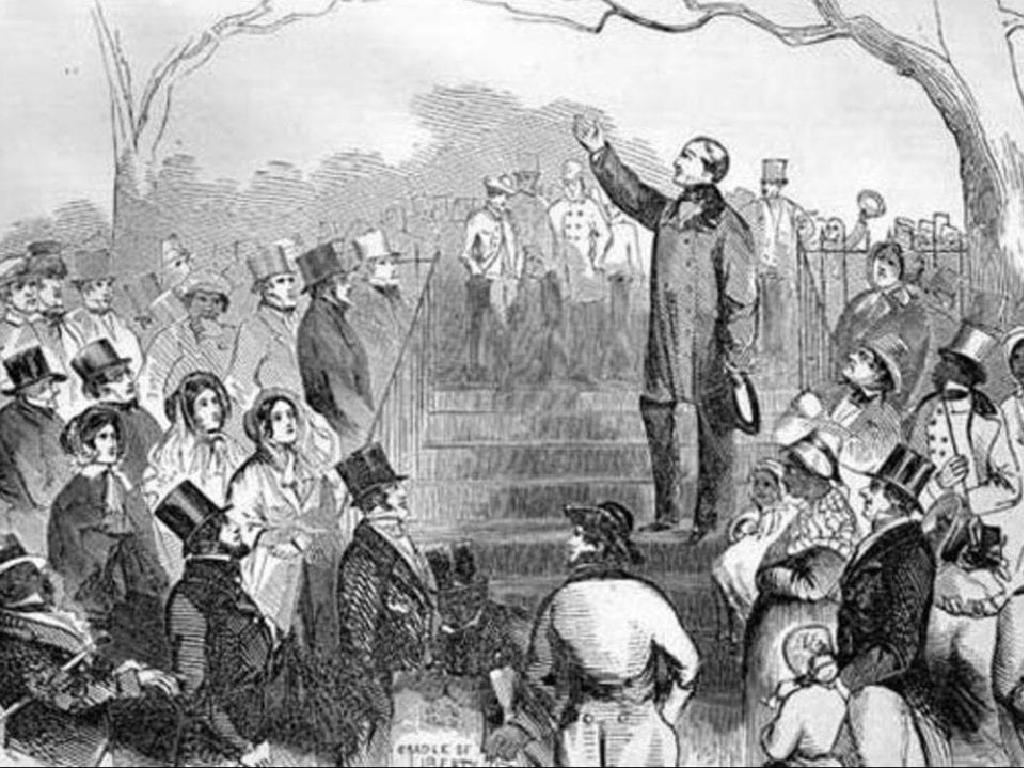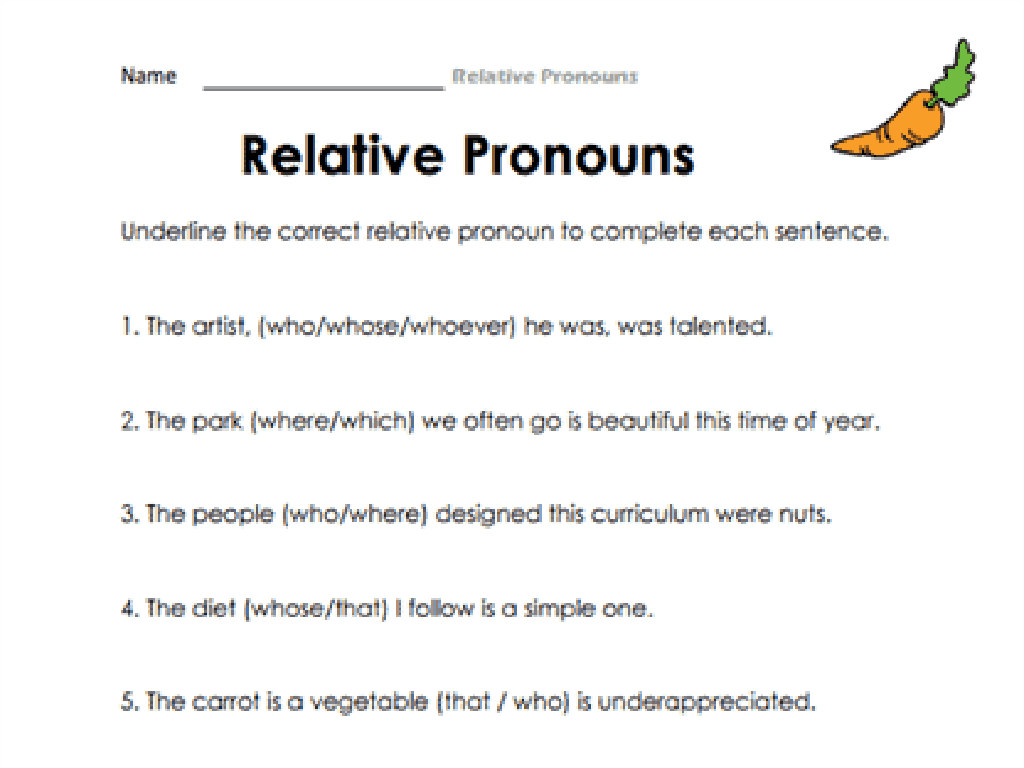Identify An Author'S Statement Of Opinion
Subject: Language arts
Grade: Third grade
Topic: Opinion Writing
Please LOG IN to download the presentation. Access is available to registered users only.
View More Content
Understanding Opinions in Writing
– What is an opinion?
– An opinion is what someone thinks or feels about something.
– Opinions vs. Facts
– Facts are true for everyone, but opinions are personal.
– Everyone’s opinion matters
– Each person’s view is unique and valuable.
– Respectful listening and sharing
– We learn from others by listening and sharing politely.
|
This slide introduces the concept of opinions to third-grade students, emphasizing the difference between opinions and facts. Opinions are personal beliefs or feelings, while facts are statements that can be proven true. It’s crucial to teach students that everyone has their own opinions, and they are all important. Encourage students to listen to and respect others’ opinions, even if they differ from their own. This lesson will set the foundation for understanding opinion writing, where they will learn to express their own thoughts and consider the perspectives of others.
Understanding Opinions in Writing
– What is an opinion?
– An opinion expresses thoughts or feelings about something.
– Opinions are personal views
– Opinions are not facts
– Examples of opinions
– Favorite color, best food, and funniest cartoon are all opinions.
|
This slide introduces the concept of opinions to third-grade students. Begin by explaining that an opinion is what someone believes or feels about something, and it can be different for everyone. Emphasize that opinions are not about being right or wrong; they are personal views. Provide relatable examples such as favorite colors, foods, and cartoons to illustrate opinions. Encourage students to think about their own opinions and understand that everyone has different thoughts and feelings. This will set the foundation for recognizing opinion statements in writing and distinguishing them from factual statements.
Facts vs. Opinions
– Facts can be proven
– Opinions express beliefs
– Practice distinguishing them
– We’ll look at different statements together in class
– Is it a fact or an opinion?
– ‘Dogs are pets’ vs. ‘Dogs are the best pets’
|
This slide introduces the concept of facts and opinions, which is crucial for understanding opinion writing. Facts are statements that are verifiable and can be proven true or false. Opinions, however, are based on personal feelings, beliefs, or preferences and cannot be proven. During the class, engage students with examples and have them practice distinguishing between facts and opinions. Use clear and relatable statements to ensure they grasp the difference. For instance, compare the statement ‘Dogs are pets’ (a fact) with ‘Dogs are the best pets’ (an opinion). Encourage students to explain why each statement is a fact or an opinion, reinforcing their understanding of the concept.
Identifying Opinions in Writing
– Authors share opinions in writing
– Like saying what their favorite ice cream is!
– Clue words: ‘I think’, ‘I feel’
– These words signal it’s what someone believes
– Opinions can be agreed or disagreed with
– It’s okay to have a different favorite flavor
– Respectful discussion of opinions
– We can talk about our different favorites kindly
|
This slide introduces students to the concept of opinions in writing. Explain that an opinion is what someone thinks or feels about something and that authors often express their opinions through their writing. Teach students to identify clue words that signal an opinion is being stated. Discuss how it’s natural for people to have different opinions and that we can either agree or disagree with the author’s view. Emphasize the importance of respecting others’ opinions and engaging in polite discussions. Encourage students to practice identifying opinions in texts they read and to think about their own opinions on various topics.
Spotting the Author’s Opinion
– Read a story or paragraph together
– Highlight opinion statements
– Look for words like ‘should’, ‘best’, ‘worst’, which often signal opinions
– Discuss opinions vs. facts
– Opinions are beliefs, not provable; facts are true and can be proven
– Understand author’s perspective
|
This slide is aimed at helping students differentiate between an author’s opinion and factual statements within a text. Start by reading a story or paragraph with the class, then guide them to identify and highlight sentences where the author expresses an opinion. Discuss with the students how these opinions are based on personal beliefs or preferences and are not necessarily backed by evidence. Contrast this with factual statements, which are objective and verifiable. Emphasize the importance of understanding the author’s perspective and how it shapes the way they write about a topic. This will enhance the students’ critical reading skills and their ability to engage with opinion writing.
Your Turn to Find Opinions!
– I’ll give you a mixed paragraph
– With a buddy, spot the opinions
– Work together to find what the author thinks or feels
– Highlight the opinion statements
– Use a highlighter to mark opinion sentences
– Share your findings with the class
|
This activity is designed to help students differentiate between factual statements and the author’s opinions. Provide a paragraph that includes both types of statements. Pair the students and instruct them to read the paragraph together. Their task is to identify and highlight the opinion statements. Opinions often include words that show feelings or beliefs, such as ‘best’, ‘wonderful’, or ‘should’. After the activity, ask the pairs to share their findings with the class. This will reinforce their understanding and provide an opportunity for discussion. As a teacher, be prepared with examples of opinion words and phrases to guide the students if they need help.
Class Activity: Opinion Detectives
– Play ‘Opinion Detectives’ game
– Work in groups with statement lists
– Separate facts from opinions
– Discuss reasons for your choices
– Share with the class why you think a statement is a fact or an opinion
|
This activity is designed to help students distinguish between factual statements and opinions. Divide the class into small groups and provide each group with a list of mixed statements. Students will collaborate to categorize each statement as a fact or an opinion. After sorting, each group will discuss their reasoning behind their choices. This will develop critical thinking and reasoning skills. As a teacher, facilitate the discussion by asking guiding questions and providing feedback. Possible activities for different groups could include sorting statements from a story, a news article, or creating their own statements to challenge other groups. Encourage students to justify their decisions with evidence from the text or their own knowledge.
Conclusion & Reflection: Understanding Opinions
– Importance of recognizing opinions
Knowing opinions helps us understand feelings and perspectives.
– Opinions influence story perception
Opinions can shape the way we think about the story’s events and characters.
– Reflect on today’s lesson
Think about what you learned and how you feel about it.
– Share your own opinion
What did you think about learning opinions in stories?
|
This slide aims to wrap up the lesson by discussing the significance of identifying opinions in texts. Understanding an author’s opinion helps students to grasp the underlying messages and intentions behind a story. It also encourages critical thinking as students learn to distinguish between facts and personal viewpoints. By reflecting on how opinions shape our reading, students become more analytical readers. Encourage students to share their thoughts on the lesson to foster a sense of involvement and to hear diverse perspectives. This reflection helps students to consolidate their learning and express their own opinions confidently.






